 "ttyymmnn" (ttyymmnn)
"ttyymmnn" (ttyymmnn)
01/19/2018 at 12:35 • Filed to: wingspan, Planelopnik, TDIAH
 11
11
 20
20
 "ttyymmnn" (ttyymmnn)
"ttyymmnn" (ttyymmnn)
01/19/2018 at 12:35 • Filed to: wingspan, Planelopnik, TDIAH |  11 11
|  20 20 |
!!! UNKNOWN CONTENT TYPE !!!
Welcome to
This Date in Aviation History
, getting of you caught up on milestones, important historical events and people in aviation from January 17 through January 19.
!!! UNKNOWN CONTENT TYPE !!!
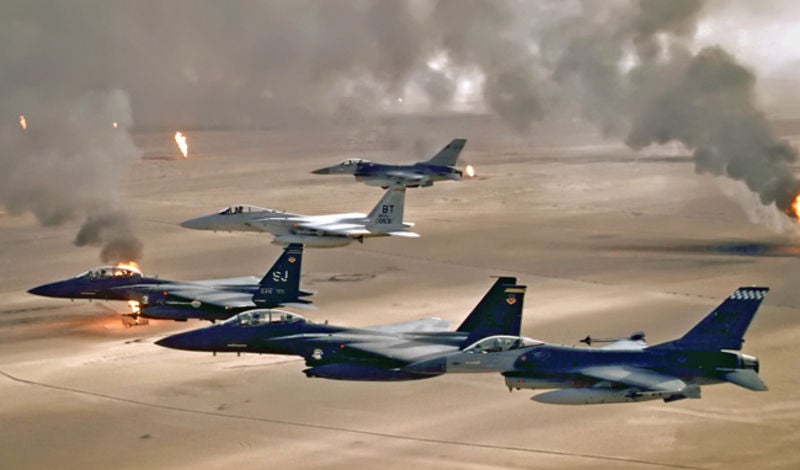
January 17, 1991 – Operation Desert Storm begins with a massive air campaign against Iraqi forces in Kuwait and Iraq. It’s difficult to know what Iraqi president Saddam Hussein was thinking when he invaded the tiny nation of Kuwait on Iraq’s southern border on August 2, 1990. Some point to a dispute over slant drilling, with Hussein accusing the Kuwaitis of drilling underneath Iraqi soil. Others point to huge debt incurred by the Iraqi government following the protracted war with Iran. Or perhaps it was simply hubris on the part of a ruthless dictator. Regardless, the invasion brought swift condemnation from all of the world’s major powers and. One day after the invasion, the United Nations passed !!!error: Indecipherable SUB-paragraph formatting!!! calling for the immediate withdrawal of Iraqi troops. When negotiations failed, a coalition of nations, led by the US, decided that the only solution was to retake Kuwait militarily, launching a two-part operation to liberate Kuwait that began Operation Desert Shield, a massive air assault against Iraqi ground positions, followed by Operation Desert Storm, when ground forces moved into Kuwait and Iraq.
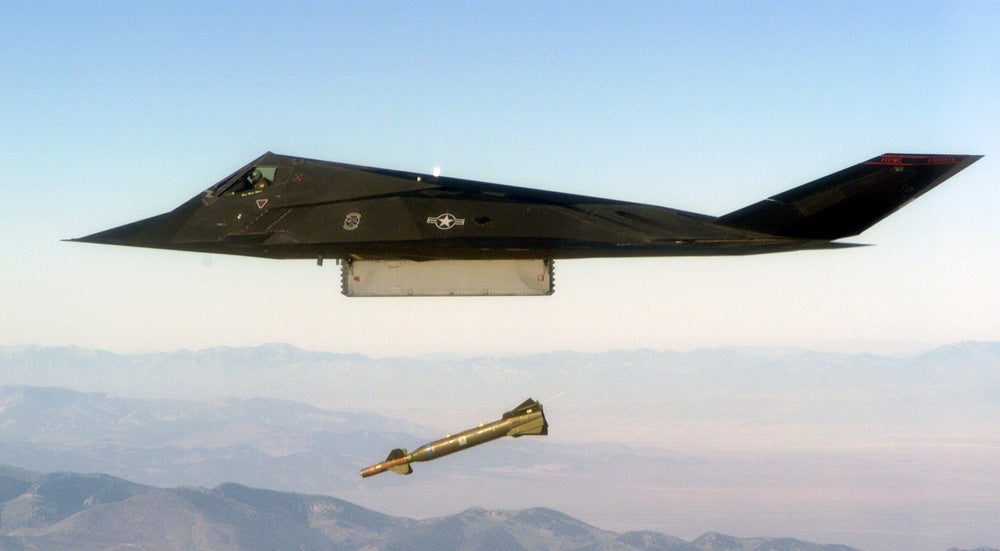
An F-117 Nighthawk drops a laser-guided bomb.
The air assault began at 2:10 am on the morning of January 17, when Task Force Normandy, a flight of eight !!!error: Indecipherable SUB-paragraph formatting!!! attack helicopters led by two !!!error: Indecipherable SUB-paragraph formatting!!! helicopters, destroyed radar sites on the Iraqi border that would have alerted the Iraqi defenses of an impending attack. This was followed with sorties against airfields, radar installations, and Iraqi command and control centers as far north as Baghdad. !!!error: Indecipherable SUB-paragraph formatting!!! cruise missiles were fired at the Iraqi capital from US Navy ships and !!!error: Indecipherable SUB-paragraph formatting!!! flew all the way from Louisiana to drop their bombs. And while it wasn’t the first time that the !!!error: Indecipherable SUB-paragraph formatting!!! had flown into battle (two took part in the invasion of Panama in 1989), it was the first time they had been employed in large numbers. Flying over Baghdad, one of the most heavily defended cities in the world, the Nighthawks were completely undetected. The only way the Iraqis knew there were bombers in the air was when something blew up. With extremely accurate laser guided bombs, the Nighthawks were able to destroy almost all of the vital command and control centers in the capital in a single night. The F-117 was so effective, and invisible to Iraqi defenders, that even though it flew only 1-percent of all sorties by coalition forces, its pilots accounted for 40-percent of all bomb damage, and had an astounding 75-percent rate of direct hits. Not one F-117 was struck by enemy fire.

The true multinational effort of Desert Shield/Desert Storm is illustrated in this formation flight. From left to right: a Qatari Mirage F1, a French Mirage F1, a U.S. Air Force F-16C Fighting Falcon, a Canadian CF-18A Hornet and a Qatari Alpha Jet.
But it wasn’t all stealth fighters doing the work. As part of the more than 1,000 sorties flown that first night, !!!error: Indecipherable SUB-paragraph formatting!!! electronic warfare planes escorted !!!error: Indecipherable SUB-paragraph formatting!!! to bomb Iraqi airfields. During that mission, one of the Ravens scored a kill against an Iraqi !!!error: Indecipherable SUB-paragraph formatting!!! when its low level maneuvering to avoid the Raven caused the pilot to crash. This marks the only time an F-111 achieved an aerial victory over an opponent. US Navy fighters and attack aircraft also took part in the action, and in one instance, two !!!error: Indecipherable SUB-paragraph formatting!!! , on their way to attack Iraqi oil fields, dispatched two Iraqi !!!error: Indecipherable SUB-paragraph formatting!!! fighters then continued their mission and dropped their bombs. Though the bulk of combat missions were flown by the US, British !!!error: Indecipherable SUB-paragraph formatting!!! and !!!error: Indecipherable SUB-paragraph formatting!!! fighters played an important role in attacking air fields and ground targets. French Jaguars and !!!error: Indecipherable SUB-paragraph formatting!!! also pressed the ground attack, while !!!error: Indecipherable SUB-paragraph formatting!!! fighters provided cover for the bombers. Canadian forces flying the !!!error: Indecipherable SUB-paragraph formatting!!! took part in escort and ground attack missions. The air campaign continued until February 23 and, by the time the coalition ground forces entered Kuwait, the much vaunted Iraqi air force had either been completely destroyed or fled, and command of Iraqi troops was virtually impossible. Coalition forces had complete control of the battle space, and the campaign to liberate Kuwait took a mere 100 hours. In all, coalition forces lost 52 fixed-wing aircraft (39 lost in combat) and 23 helicopters (five helicopters lost in combat). Iraq by comparisonhad lost 259 aircraft. (US Air Force photo)
!!! UNKNOWN CONTENT TYPE !!!
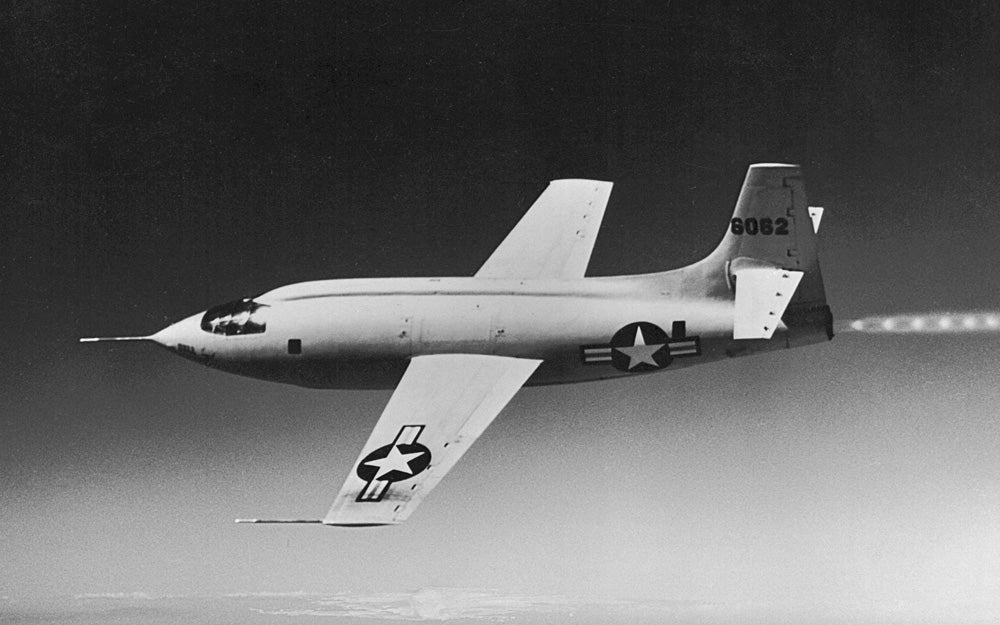
January 19, 1946 – The first flight of the Bell X-1. During WWII, the piston engine reached the zenith of its development, and jet engines became the powerplant of the future. But for aircraft designers, the jets still weren’t fast enough, and the race was on to develop an aircraft that could exceed the speed of sound, even though nobody really knew if it was possible. The British were initially at the forefront of the effort, with Miles Aircraft working with the British Ministry of Aviation to develop a turbojet engine that could reach 1,000 mph and soar to 36,000 feet. While rocket-powered models of the !!!error: Indecipherable SUB-paragraph formatting!!! were built, the ministry canceled the project in favor of development of the !!!error: Indecipherable SUB-paragraph formatting!!! . However, one significant breakthrough to come out of the M.52 program was the all-moving !!!error: Indecipherable SUB-paragraph formatting!!! . Traditional aircraft used moving !!!error: Indecipherable SUB-paragraph formatting!!! fitted to the trailing edge of the horizontal stabilizer. But at supersonic speeds, the elevators could not be moved, so Miles employed a system where the entire horizontal tailplane moved, making control at high speeds possible. This discovery would play an important role in the development of the X-1, and it is an arrangement that is still in use to this day.
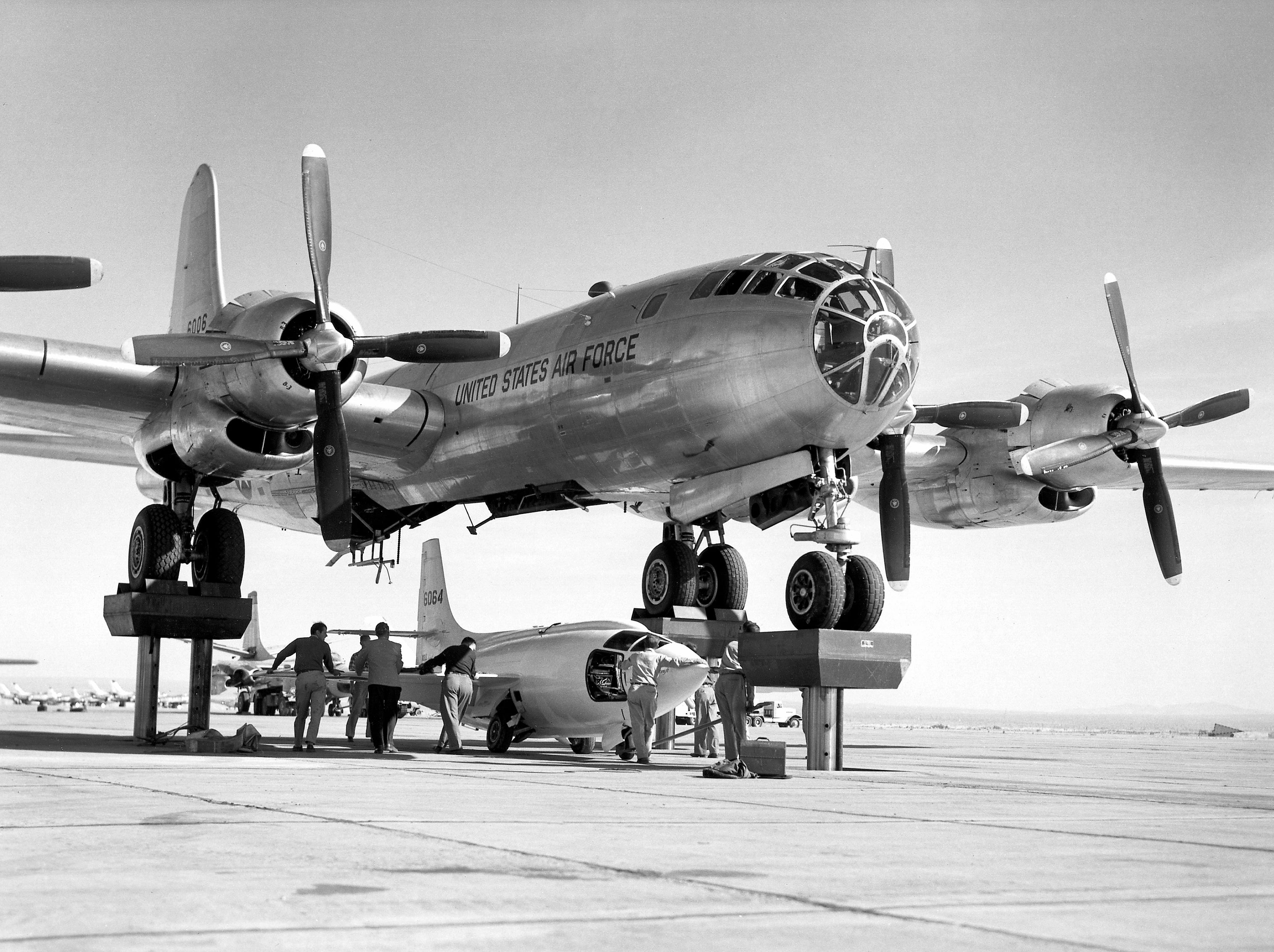
The X-1 being loaded under its Boeing B-50 Stratofortress mothership
By 1944, Bell was already working on their own supersonic plane, and the Air Ministry signed an agreement with the US to share data. Bell was allowed to inspect the Miles design, but Bell reneged on the sharing plan, and adopted the stabilator to their own aircraft, which had up to that point employed a traditional tail. The general shape of the two aircraft was similar, but since so little was known about supersonic aerodynamics, Bell designers looked at bullets that were known to travel supersonically. Thus, the X-1 was designed to mimic the shape of a .50 caliber bullet, a shape that was known to be stable at supersonic speeds. Though Miles had planned on a jet engine, the X-1 was built to be powered by a four-chamber rocket motor designed by !!!error: Indecipherable SUB-paragraph formatting!!! that burned ethyl alcohol diluted with water through a liquid oxygen oxidizer.
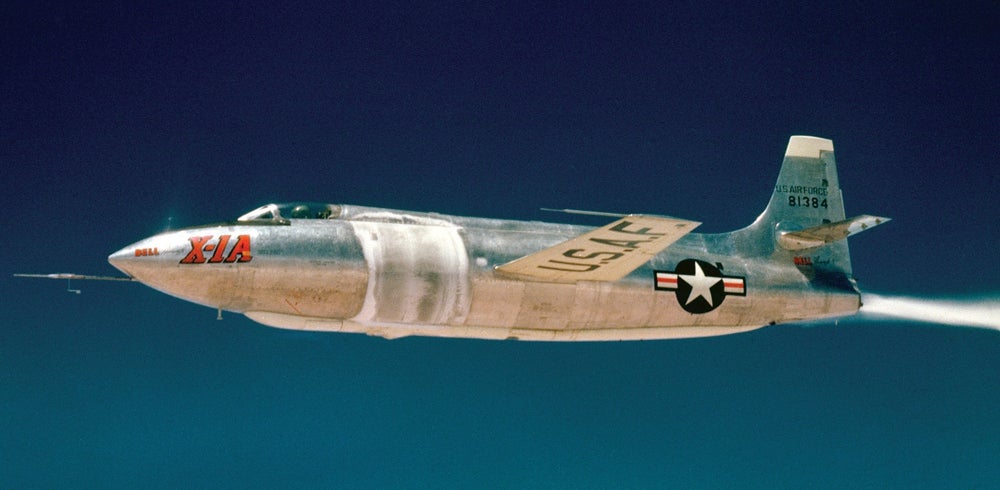
The X-1A in flight
Test flights of the X-1 began with the maiden flight of the X-1 piloted by Bell’s chief test pilot !!!error: Indecipherable SUB-paragraph formatting!!! , a glide test. Woolams completed nine flights before his death while practicing for an air race, and the test flights were taken over by another Bell test pilot, !!!error: Indecipherable SUB-paragraph formatting!!! , who made a further 26 flights, including the first powered flight on December 9, 1946. Interservice squabbling, and a demand from Goodlin for a $150,000 should he breaking the sound barrier, resulted in the project being taken over by the !!!error: Indecipherable SUB-paragraph formatting!!! (NACA), the predecessor to NASA, who planned to use the data obtained from the X-1 for future supersonic aircraft development.
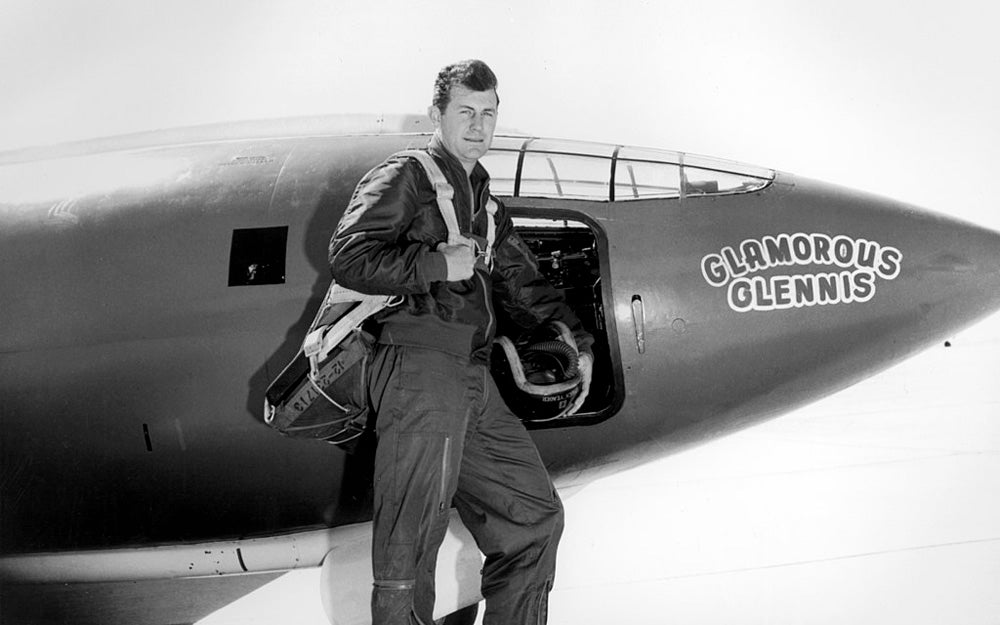
!!!error: Indecipherable SUB-paragraph formatting!!! took over flying duties, and he piloted the X-1 past the sound barrier for the first time on October 14, 1947 (Yeager had broken his ribs in a horse riding accident just before the flight, but he didn’t report the injury, fearing that he would be excluded from the flight. Bell engineers rigged a broom handle so Yeager could close the hatch on the airplane). The aircraft, nicknamed Glamorous Glennis in honor of Yeager’s wife, was dropped from a modified !!!error: Indecipherable SUB-paragraph formatting!!! and reached a speed a Mach 1.06 (700 mph), becoming the first pilot and plane to exceed Mach 1 in level flight. For the flight, Yeager, Bell president Lawrence Bell, and !!!error: Indecipherable SUB-paragraph formatting!!! of NACA were all awarded the !!!error: Indecipherable SUB-paragraph formatting!!! (according to his biography, Yeager would keep the trophy in his garage to store nuts and bolts). Bell produced five variants, each testing different aspects of supersonic flight and materials and systems for the manufacture and control of high-speed aircraft. The final variant, the X-1E, reached a speed of Mach 2.21 in 1958 with test pilot !!!error: Indecipherable SUB-paragraph formatting!!! at the controls. (NASA photo)
!!! UNKNOWN CONTENT TYPE !!!
Short Takeoff
!!! UNKNOWN CONTENT TYPE !!!
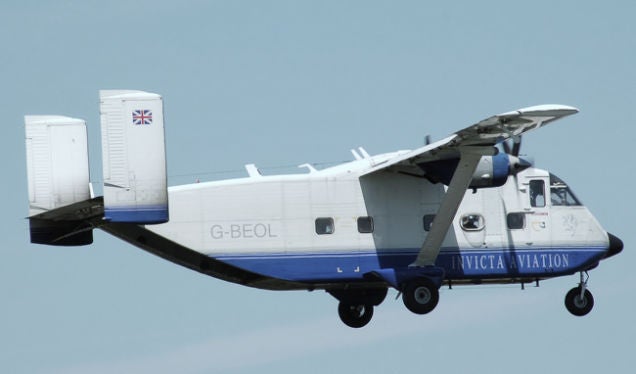
January 17, 1963 – The first flight of the Short SC.7 Skyvan, a 19-seat, twin turboprop utility aircraft developed by !!!error: Indecipherable SUB-paragraph formatting!!! of Northern Ireland (usually called simply Shorts). The SC.7 was inspired by the !!!error: Indecipherable SUB-paragraph formatting!!! , and the idea for developing the Skyvan came about when !!!error: Indecipherable SUB-paragraph formatting!!! approached Shorts with the idea of developing the Aerovan. Shorts went about building their own aircraft instead, though the two designs do share certain similarities. The Skyvan’s cavernous fuselage makes it ideal for cargo hauling and skydiving, and it was later developed into the !!!error: Indecipherable SUB-paragraph formatting!!! and !!!error: Indecipherable SUB-paragraph formatting!!! which were used as commuter airliners. A total of 153 Skyvans were produced between 1963-1986. (Photo by Adrian Pingstone via !!!error: Indecipherable SUB-paragraph formatting!!! )
!!! UNKNOWN CONTENT TYPE !!!
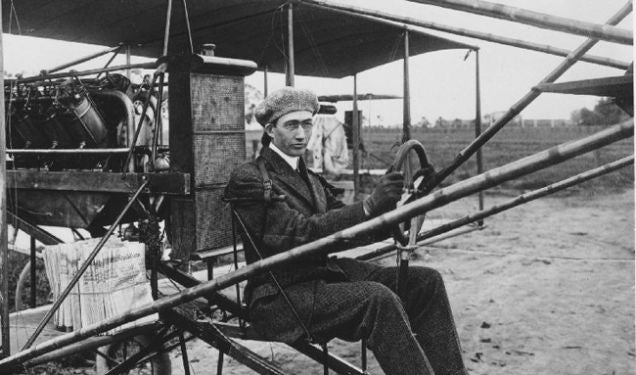
January 17, 1886 – The birth of Glenn L. Martin,
an early American aviation pioneer who founded his own aircraft company in 1912. His first successful aircraft was the
!!!error: Indecipherable SUB-paragraph formatting!!!
, a large biplane bomber that served in WWI. He went on to create many successful aircraft during WWII, notably the
!!!error: Indecipherable SUB-paragraph formatting!!!
and the
!!!error: Indecipherable SUB-paragraph formatting!!!
bombers, as well as large flying boats such as the
!!!error: Indecipherable SUB-paragraph formatting!!!
and the
!!!error: Indecipherable SUB-paragraph formatting!!!
. Following the war, Martin found success in the aerospace industry, building the
!!!error: Indecipherable SUB-paragraph formatting!!!
rocket, the first American rocket built specifically for orbital launch. Martin followed the Vanguard with the
!!!error: Indecipherable SUB-paragraph formatting!!!
series of larger rockets. Following his death in 1955, the company merged with American-Marietta Corporation to form
!!!error: Indecipherable SUB-paragraph formatting!!!
in 1961, and that company eventually merged with Lockheed to form
!!!error: Indecipherable SUB-paragraph formatting!!!
in 1995.
(Photo via San Deigo Air and Space Musem)
!!! UNKNOWN CONTENT TYPE !!!
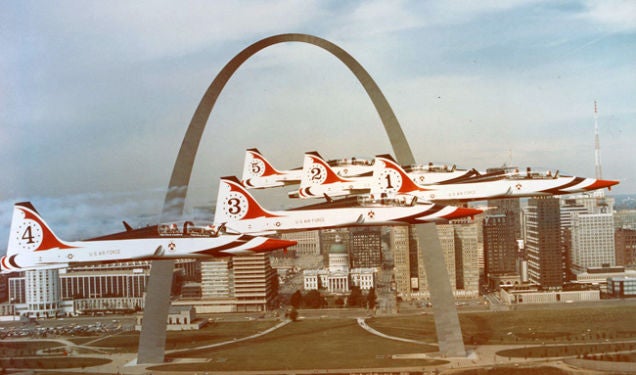
January 18, 1982 – Four USAF Thunderbirds are lost in a crash during practice.
Since the Thunderbirds began performing air shows in 1953, three Thunderbird pilots have been lost during an air show. But training accidents have claimed 18 lives, including an entire four-ship flight of
!!!error: Indecipherable SUB-paragraph formatting!!!
that crashed into the ground at the Thunderbirds’ Indian Springs, Nevada training area. The team was practicing a line-abreast loop when the lead pilot, Maj. Tom Lowry, experienced a jammed stabilizer that caused him to fly into the ground. The other pilots, following standard procedure, were fixed on the leader, and not looking forward. The four planes hit simultaneously, instantly killing all four pilots. After an 18-month hiatus from performing, the Thunderbirds transitioned back to frontline fighters and returned to the show circuit flying the
!!!error: Indecipherable SUB-paragraph formatting!!!
.
(US Air Force photo)
!!! UNKNOWN CONTENT TYPE !!!
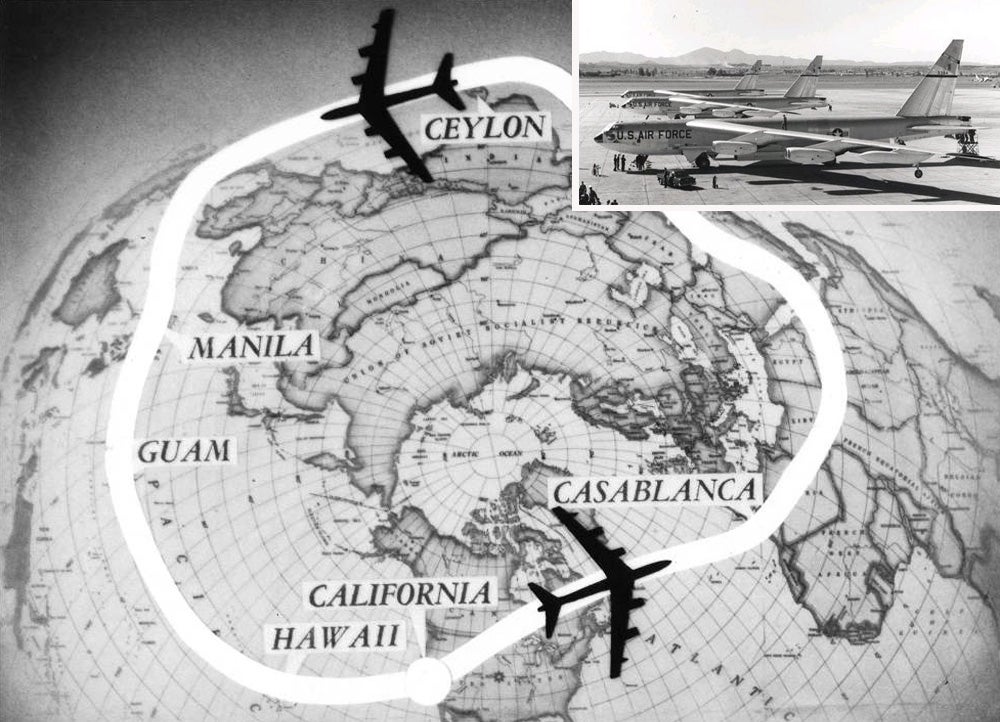
January 18, 1957 – Three USAF Boeing B-52B Stratofortresses complete the world’s first non-stop circumnavigation of the earth in a jet-powered aircraft.
In a mission dubbed Operation Power Flite, five USAF B-52s from the 93rd Bombardment Wing (three, plus two spares) departed from Castle AFB in California on a flight that was as much about propaganda as it was about testing operational capabilities. With aerial refuelings provided by
!!!error: Indecipherable SUB-paragraph formatting!!!
tankers, the flight covered 24,235 miles and was completed in 45 hours and 19 minutes. The commander of the lead aircraft
Lucky Lady III
, Lt. Col. James Morris, had previously been copilot of
!!!error: Indecipherable SUB-paragraph formatting!!!
, a
!!!error: Indecipherable SUB-paragraph formatting!!!
that circumnavigated the globe in 1949. Strategic Air Command General
!!!error: Indecipherable SUB-paragraph formatting!!!
presented the B-52 crews with the
!!!error: Indecipherable SUB-paragraph formatting!!!
upon their return.
(US Air Force photo and map)
!!! UNKNOWN CONTENT TYPE !!!
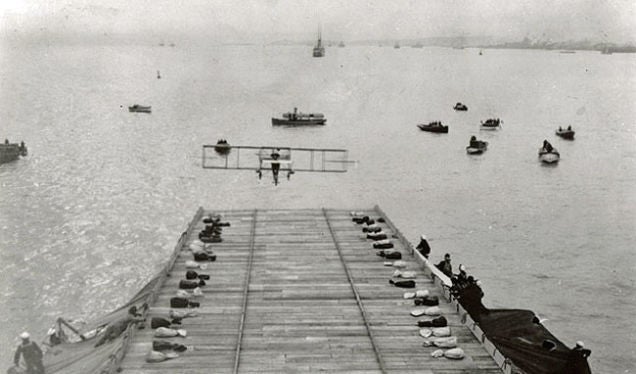
January 18, 1911 – Eugene Ely makes the first landing on a ship.
After succesfuly taking off from the USS
Birmingham
(CL-2) in Hampton Roads two months earlier, Ely, with the help of
!!!error: Indecipherable SUB-paragraph formatting!!!
and at the urging of the US Navy, made the first landing on a ship, touching down his
!!!error: Indecipherable SUB-paragraph formatting!!!
on the USS
Pennsylvania
(ACR-4) moored in San Francisco Bay. A 120-foot temporary deck was built on the ship, outfitted with ropes tied to sandbags to provide a crude arresting system. While thousands of spectators watched, Ely performed a flawless landing and, after lunch with the captain of the
Pennsylvania
, the ship was turned into the wind and Ely took off for the return flight to the Tanforan Race Track where he had taken off earlier in the day.
(Photo via the
!!!error: Indecipherable SUB-paragraph formatting!!!
)
!!! UNKNOWN CONTENT TYPE !!!
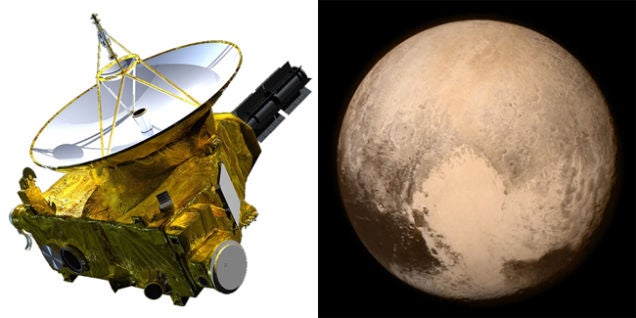
January 19, 2006 – The launch of the New Horizons interplanetary space probe. The New Horizons probe was launched by NASA to perform the first flyby of the dwarf planet of Pluto, and to return close-up pictures to Earth for the first time. Part of the NASA’s !!!error: Indecipherable SUB-paragraph formatting!!! program, which also includes study of Jupiter and Venus, New Horizons became the first spacecraft to explore Pluto when it arrived on July 14, 2015 after a nine-year journey. following its flypast of Pluto, New Horizons has maneuvered for a flyby of object !!!error: Indecipherable SUB-paragraph formatting!!! in the !!!error: Indecipherable SUB-paragraph formatting!!! , and NASA expects the probe to arrive on January 1, 2019. (NASA photos)
!!! UNKNOWN CONTENT TYPE !!!
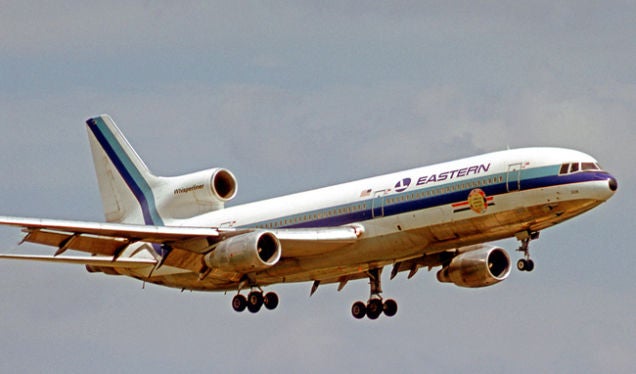
January 19, 1991 – Eastern Air Lines is dissolved.
Following the
!!!error: Indecipherable SUB-paragraph formatting!!!
of 1930, Eastern was one of the “Big Four” airlines (Eastern, American, TWA, United) created by the US government to handle passenger travel separately from air mail delivery. Led at first by WWI fighter ace
!!!error: Indecipherable SUB-paragraph formatting!!!
, Eastern enjoyed a near monopoly of the air routes on the East Coast, particularly between New York and Florida, into the 1950s. But by the late 1970s, Eastern struggled with labor disputes and high debt under the leadership of former astronaut
!!!error: Indecipherable SUB-paragraph formatting!!!
, and the company was eventually taken over by
!!!error: Indecipherable SUB-paragraph formatting!!!
in 1985, who moved many of the company’s assets to his other airlines, Continental and Texas Air. Following more labor disputes and a strike in 1989, Lorenzo liquidated the storied airline in 1991 after 64 years of continuous operation.
(Photo by Ruth AS via
!!!error: Indecipherable SUB-paragraph formatting!!!
)
!!! UNKNOWN CONTENT TYPE !!!
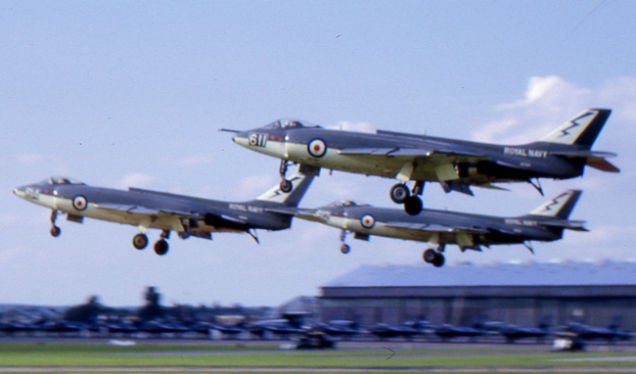
January 19, 1956 – The first flight of the Supermarine Scimitar. The Scimitar began as part of a study to develop a fighter with no undercarriage that would land on a sprung rubber deck. After the Royal Navy abandoned that idea, Supermarine developed the aircraft into a more traditional fighter called the Type 508. That aircraft was subsequently developed into the Scimitar, with the Royal Navy ordering 100 aircraft but changing its role from a fighter to a low level strike aircraft capable of delivering nuclear weapons. Ultimately, only 76 Scimitars were produced, and a high accident rate, including the death of Commander John Russell due to an arrester wire failure that was !!!error: Indecipherable SUB-paragraph formatting!!! by Pathé News, led to its replacement by the !!!error: Indecipherable SUB-paragraph formatting!!! and !!!error: Indecipherable SUB-paragraph formatting!!! . (Photo by TSRL via !!!error: Indecipherable SUB-paragraph formatting!!! )
!!! UNKNOWN CONTENT TYPE !!!
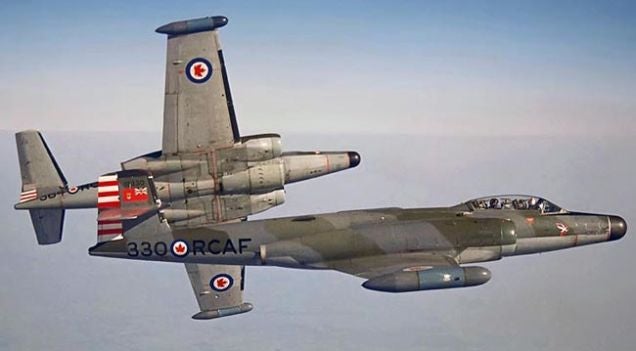
January 19, 1950 – The first flight of the Avro Canada CF-100 Canuck. The Canuck, known affectionately to its pilots as “Clunk,” was the only domestically-produced Canadian fighter to enter mass production. Its all-weather capability, powerful engines and radar, short takeoff roll and high rate of climb made the Canuck an ideal interceptor, a role which it filled for the RCAF throughout the Cold War. It was called on to patrol the vast reaches of North America as part of NORAD to intercept Russian bombers on reconaissance missions, and was so ruggedly built that initial estimates of a 2,000 hour lifespan actually turned out to be 20,000 hours in frontline use. After its introduction in 1952, nearly 700 Canucks were produced before it was replaced by the the !!!error: Indecipherable SUB-paragraph formatting!!! . The Canuck was finally retired in 1982. (Canadian Department of National Defence photo)
!!! UNKNOWN CONTENT TYPE !!!
Connecting Flights
!!! UNKNOWN CONTENT TYPE !!!
!!! UNKNOWN CONTENT TYPE !!!
!!! UNKNOWN CONTENT TYPE !!!
!!! UNKNOWN CONTENT TYPE !!!
!!! UNKNOWN CONTENT TYPE !!!
If you enjoy these Aviation History posts, please let me know in the comments. And if you missed any of the past articles, you can find them all at
!!!error: Indecipherable SUB-paragraph formatting!!!
. You can also find more stories about aviation, aviators and airplane oddities at
!!!error: Indecipherable SUB-paragraph formatting!!!
.
!!! UNKNOWN CONTENT TYPE !!!
 HammerheadFistpunch
> ttyymmnn
HammerheadFistpunch
> ttyymmnn
01/19/2018 at 12:46 |
|
So I’m watching “24" with my wife for the first time and there is a scene where a terrorist steals an F117A (that is specifically called out as such on screen) to shoot down airforce one. Im sitting there watching it as my brains is yelling at me internally as the pilot uses his radar (they don’t have radar) to fire his air-to-air missiles (they never could carry those) to shoot down the plane being guarded by 6 f16's that, despite having prior knowledge of the jet and its mission, were unable to find the jet because its “stealth” (its only stealth on certain ground bands and an F16 at that range with its radar and knowledge of its signature could have EASILY spotted and targeted it.)
Freakin TV. rant out
 MonkeePuzzle
> ttyymmnn
MonkeePuzzle
> ttyymmnn
01/19/2018 at 12:46 |
|
“Skyvan”
never has there been a more accurate name
 Rusty Vandura - www.tinyurl.com/keepoppo
> HammerheadFistpunch
Rusty Vandura - www.tinyurl.com/keepoppo
> HammerheadFistpunch
01/19/2018 at 12:49 |
|
The Serbians shot down an F-117 with an optically guided missile.
The far fetched show that comes to my mind is “Battleship,” where they fire up a battleship from a museum and go out and blow up the aliens, or whatever. Right. Three bags full.
 Rusty Vandura - www.tinyurl.com/keepoppo
> ttyymmnn
Rusty Vandura - www.tinyurl.com/keepoppo
> ttyymmnn
01/19/2018 at 12:50 |
|
Gulf One: I was in Würzburg.
Buff Round-the-World Flight: 5 aicraft, 40 engines. How many of those engines were still operational after 45 hours in the air?
Eastern Airlines: no Frisbee fairing. Have you ever written about that tri-jet feature?
 HammerheadFistpunch
> Rusty Vandura - www.tinyurl.com/keepoppo
HammerheadFistpunch
> Rusty Vandura - www.tinyurl.com/keepoppo
01/19/2018 at 12:50 |
|
with that show I accept a little silliness. This one just pissed me off becuase its supposed to be scary and real feeling.
 ttyymmnn
> Rusty Vandura - www.tinyurl.com/keepoppo
ttyymmnn
> Rusty Vandura - www.tinyurl.com/keepoppo
01/19/2018 at 12:54 |
|
Re: Frisbee — no, I have not. Might make a neat little article.
 ttyymmnn
> Rusty Vandura - www.tinyurl.com/keepoppo
ttyymmnn
> Rusty Vandura - www.tinyurl.com/keepoppo
01/19/2018 at 13:01 |
|
The missile that shot down the F-117 was radio guided. The Serbs had intelligence on when and where the 177s were going to fly, and they realized that, with a very low frequency, they could detect the 117 when its bomb bay was opened. The fired three missiles at the point where they thought it would be, and the third one detonated close enough to knock the Nighthawk out of the sky. It was a combination of good intelligence, clever thinking, and a little bit of luck.
#Pedant gonna pedant
 Rusty Vandura - www.tinyurl.com/keepoppo
> HammerheadFistpunch
Rusty Vandura - www.tinyurl.com/keepoppo
> HammerheadFistpunch
01/19/2018 at 13:01 |
|
I’ve grown very picky in my old age about what I will spend time watching. Whatever that movie was you were describing likely would not make the cut. I am a bit more tolerant about SciFi because, well, SciFi. And superheros are not SciFi. Currently into The Crown. Very satisfying and very well done.
Must Watch Short List:
Coneheads
Galaxy Quest
Nacho Libre
Moonstruck*
That a movie with Nicholas Cage could make my Must Watch Short List is no concession to Mr. Cage, one of the worst actors ever.
 Rusty Vandura - www.tinyurl.com/keepoppo
> ttyymmnn
Rusty Vandura - www.tinyurl.com/keepoppo
> ttyymmnn
01/19/2018 at 13:02 |
|
Be sure to ping me when you do.
 HammerheadFistpunch
> Rusty Vandura - www.tinyurl.com/keepoppo
HammerheadFistpunch
> Rusty Vandura - www.tinyurl.com/keepoppo
01/19/2018 at 13:05 |
|
24 is a tv series and its very well produced to keep you watching. Its not good in terms of continuity but its very watchable.
 ttyymmnn
> HammerheadFistpunch
ttyymmnn
> HammerheadFistpunch
01/19/2018 at 13:07 |
|
My favorite absolute bullshit F-117 moment comes in the movie Executive Decision . Terrorists have taken over a 747, and a commando team, led by the hilariously-named Lt. Col. Austin Travis (Steven Seagal) flies undetected underneath the 747, attaches like a remora to the underside of the airliner, then extends a tube, cuts a hole (or opens a hatch, don’t remember) in the 747, and the commandos climb out of the 117 (from the bomb bay? it’s never clearly explained) and get onboard. Sadly, the heroic Col. Travis is lost during the operation when the tube fails and he gets sucked to his death.
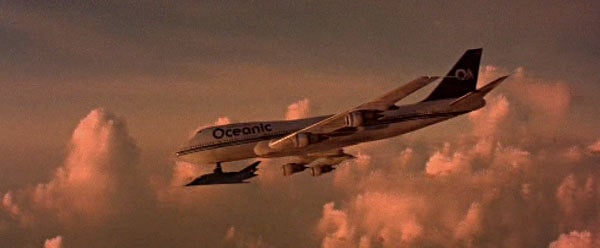
 HammerheadFistpunch
> ttyymmnn
HammerheadFistpunch
> ttyymmnn
01/19/2018 at 13:09 |
|
I love that movie. So bad, so good. In that case though I think they specify at least that its a one off ship based on the nighthawk but not the nighthawk. So there’s that.
 Rusty Vandura - www.tinyurl.com/keepoppo
> ttyymmnn
Rusty Vandura - www.tinyurl.com/keepoppo
> ttyymmnn
01/19/2018 at 13:10 |
|
I would bet $100 that the story I heard said optically guided, though based upon your reporting, that story must have been inaccurate.
#pedantic DNE pedant
 ttyymmnn
> Rusty Vandura - www.tinyurl.com/keepoppo
ttyymmnn
> Rusty Vandura - www.tinyurl.com/keepoppo
01/19/2018 at 13:11 |
|
Roger Wilco.
 ttyymmnn
> Rusty Vandura - www.tinyurl.com/keepoppo
ttyymmnn
> Rusty Vandura - www.tinyurl.com/keepoppo
01/19/2018 at 13:12 |
|
Well, I only know what I remember reading, and some of that comes from Wikipedia.
 Rusty Vandura - www.tinyurl.com/keepoppo
> ttyymmnn
Rusty Vandura - www.tinyurl.com/keepoppo
> ttyymmnn
01/19/2018 at 13:24 |
|
I’d put more stock in your reporting than I would in what I (thought I) heard on NPR 25 years ago.
 user314
> HammerheadFistpunch
user314
> HammerheadFistpunch
01/19/2018 at 14:29 |
|
Sounds like they based it on the ‘unrealistic’ plane from the Micro Pose F-117 game
 user314
> ttyymmnn
user314
> ttyymmnn
01/19/2018 at 14:36 |
|
God, that Thunderbirds crash raises the hackles on my neck. I understand fixing on the leader, but you’d think they’d have someone watching the ground.
 ttyymmnn
> user314
ttyymmnn
> user314
01/19/2018 at 16:04 |
|
They do. The leader.
 Distraxi's idea of perfection is a Jagroen
> ttyymmnn
Distraxi's idea of perfection is a Jagroen
> ttyymmnn
01/20/2018 at 22:20 |
|
Bit late to the party but...
The other interesting thing about Gulf War 1 is that it was the first real “live on TV” war, or “CNN War”. The Falklands postdated 24 hour news, but the UK government managed access much more tightly so it didn’t get anything like the unedited coverage.
I was living in the UK at the time and flatting with a guy who worked for GCHQ (UK’s NSA) and one who worked for RSRE (part of UK’s Darpa). They’d been working increasingly long hours for a few months when one of them came home one evening, had a shower and headed back off to work, saying on the way out the door “watch CNN tonight”. As a consequence I was able to have the then-surreal experience of watching Peter Arnett reporting live from the wrong end of the F117s and Tomahawks.
Also, one for your next TDIAH:
!!! UNKNOWN CONTENT TYPE !!!